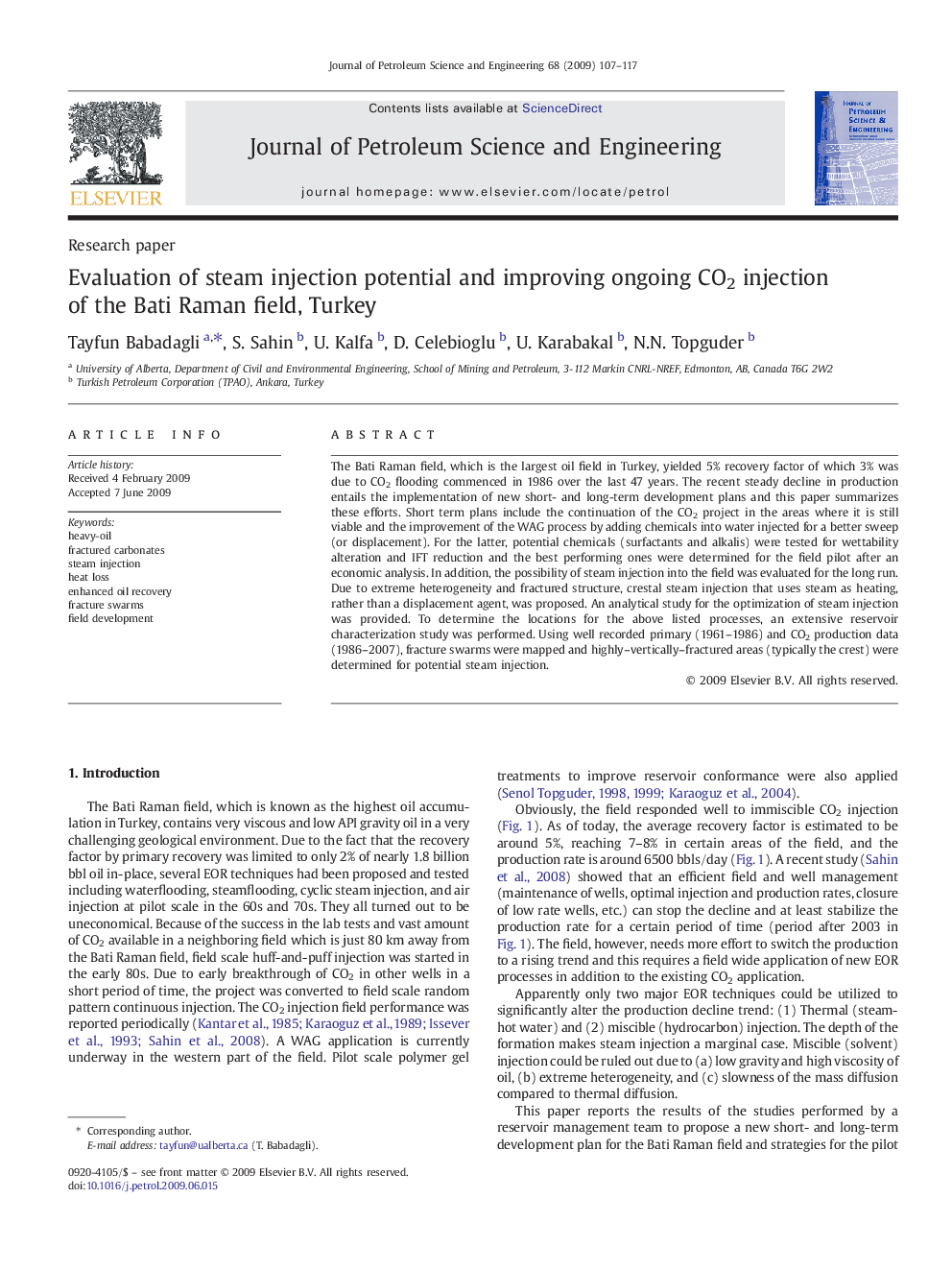| Article ID | Journal | Published Year | Pages | File Type |
|---|---|---|---|---|
| 1755995 | Journal of Petroleum Science and Engineering | 2009 | 11 Pages |
The Bati Raman field, which is the largest oil field in Turkey, yielded 5% recovery factor of which 3% was due to CO2 flooding commenced in 1986 over the last 47 years. The recent steady decline in production entails the implementation of new short- and long-term development plans and this paper summarizes these efforts. Short term plans include the continuation of the CO2 project in the areas where it is still viable and the improvement of the WAG process by adding chemicals into water injected for a better sweep (or displacement). For the latter, potential chemicals (surfactants and alkalis) were tested for wettability alteration and IFT reduction and the best performing ones were determined for the field pilot after an economic analysis. In addition, the possibility of steam injection into the field was evaluated for the long run. Due to extreme heterogeneity and fractured structure, crestal steam injection that uses steam as heating, rather than a displacement agent, was proposed. An analytical study for the optimization of steam injection was provided. To determine the locations for the above listed processes, an extensive reservoir characterization study was performed. Using well recorded primary (1961–1986) and CO2 production data (1986–2007), fracture swarms were mapped and highly–vertically–fractured areas (typically the crest) were determined for potential steam injection.
